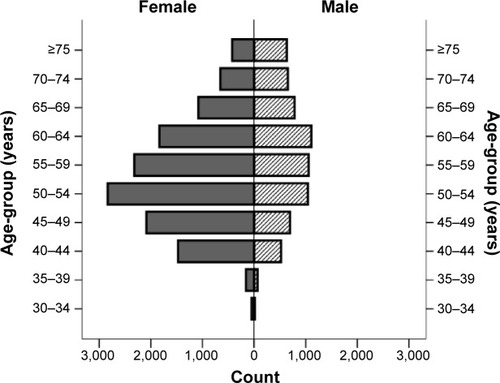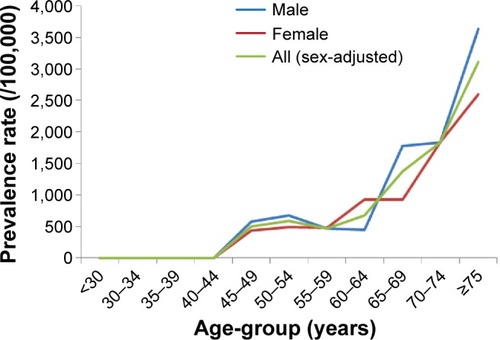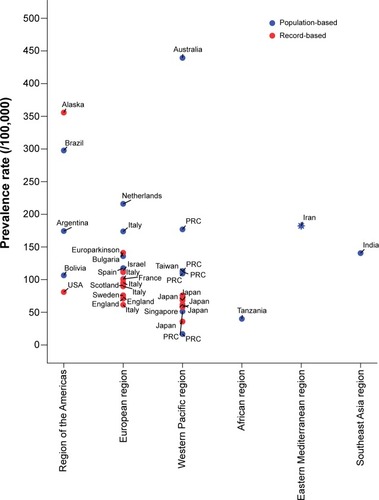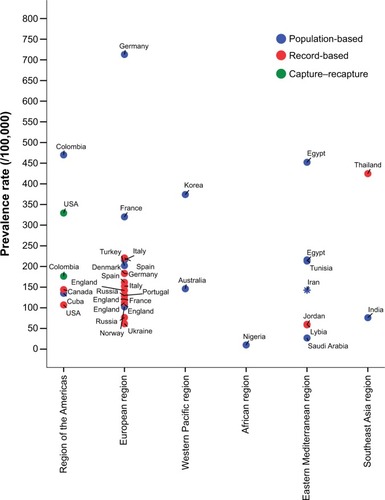Figures & data
Figure 1 Population pyramid of the study participants (n=19,500), showing the number of males and females in each age category.

Table 1 Sociodemographic and baseline characteristics of the study population (n=19,500)
Table 2 Crude numbers and prevalence rate of screened cases suspicious for parkinsonism in each age and sex category and in total study population using different screening instruments
Figure 2 Sex-specific age-adjusted prevalence rate of suspicious parkinsonism using the validated instrument by Fereshtehnejad et alCitation20 in different age categories based on Tehran census population.

Figure 3 Trend analysis for the age- and sex-adjusted prevalence rate of parkinsonism in different age categories based on Tehran census population.

Table 3 Age- and sex-adjusted rates of screened cases suspicious for parkinsonism using different screening instruments in each age category and in total study population based on Tehran census population (TP) and WHO World Standard population (WP)
Figure 4 Global standardized prevalence rate of Parkinson’s disease using different data-collection methods in different countries from each of the six World Health Organization regions.
Abbreviation: PRC, People’s Republic of China.

Figure 5 Local/national standardized prevalence rate of Parkinson’s disease using different data-collection methods in different countries from each of the six World Health Organization regions.

Table S1 Age and sex distribution of Tehran population in 2008 (data from national census)
